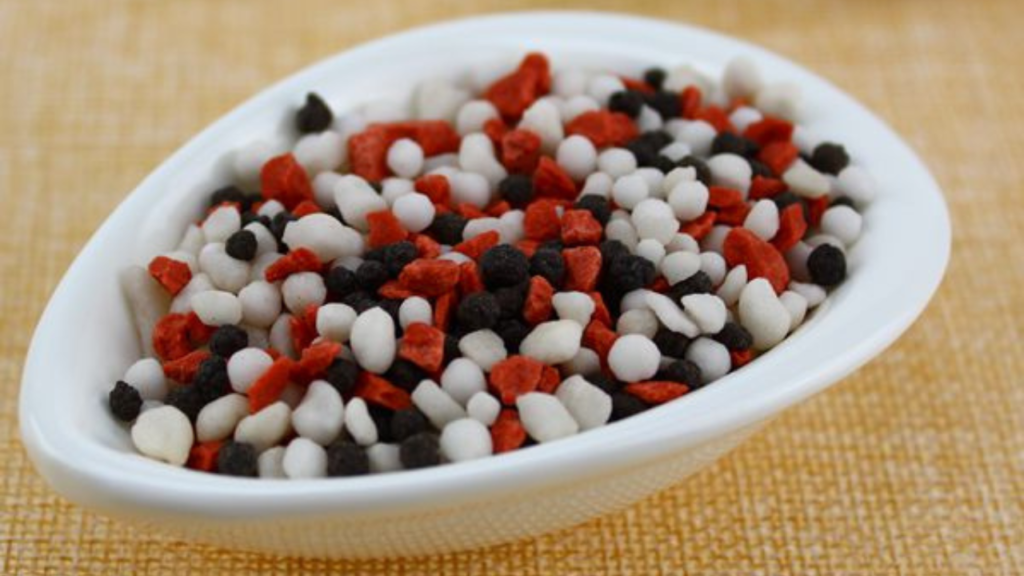Bulk blending fertiliser is a type of fertiliser that is created by physically mixing different types of individual fertiliser components. These components typically include nitrogen (N), phosphorus (P), and potassium (K), which are the primary nutrients required for plant growth.
Bulk blending aims to create a customised fertiliser mixture tailored to meet the specific nutrient needs of different crops and soil types. This process ensures that the right nutrients are applied in the right quantities, improving crop yields and soil health.
This article will explore bulk blending fertiliser, how it works, and its benefits for modern agriculture.
What is Bulk Blending Fertiliser?
Bulk blending fertiliser is a mixture of dry, granular fertiliser materials combined to form a nutrient blend. This blend is customized to match the nutrient requirements of a particular crop or soil type, making it an effective and efficient way to deliver essential nutrients to plants.
The process of bulk blending involves mixing several individual fertiliser ingredients, typically including:
- Nitrogen (N): Essential for vegetative growth and the development of leaves.
- Phosphorus (P): Important for root development, energy transfer, and flowering.
- Potassium (K): Vital for water regulation, enzyme activation, and disease resistance.
Other nutrients, such as calcium, magnesium, sulfur, and trace elements like zinc or iron, can also be added to the blend, depending on the crop’s needs. The ratio of these nutrients is determined based on soil testing and crop requirements, allowing farmers to apply a fertiliser tailored to their specific situation.
How Does Bulk Blending Fertiliser Work?
Creating and using bulk blending fertiliser can be broken down into several steps, each crucial in ensuring that the final product effectively delivers nutrients to crops.
1. Soil Testing and Crop Analysis
The first step in using bulk blending fertiliser is conducting a soil test to assess the nutrient levels already present in the soil. This helps determine which nutrients are lacking and which are sufficient. A crop analysis is also conducted to understand the specific nutrient requirements of the grown crops.
For example, different crops require different nutrient levels; wheat may need more nitrogen for leaf development, while tomatoes might need more potassium to support fruit production. By analysing the soil and crop needs, farmers can create a custom fertiliser blend that provides exactly what the plants need.
2. Selection of Fertiliser Components
Once the nutrient requirements are established, the next step is to select the individual fertiliser components that will be mixed. These components can include:
- Urea or ammonium nitrate for nitrogen
- Monoammonium phosphate (MAP) or diammonium phosphate (DAP) for phosphorus
- Potassium chloride (potash) for potassium
Additional nutrients like calcium, magnesium, or trace elements can also be added based on the specific needs of the soil and crops. The quality of the fertiliser components is essential for ensuring that the blend is effective and provides the nutrients in the correct form.
3. Mixing the Fertiliser
The selected fertiliser components are mixed using specialised equipment in a bulk blending facility. This equipment ensures that the different fertiliser materials are blended evenly to create a homogeneous product known as a bulk blend.
The mixed materials must have similar particle sizes to prevent segregation during handling and application. Proper mixing ensures that each portion of the fertiliser spread in the field contains the correct nutrient balance, ensuring uniform crop delivery.
4. Application in the Field
Once the bulk blend is prepared, it can be applied to the fields using traditional fertiliser methods, such as broadcast spreading, row placement, or topdressing. The blend is spread evenly over the soil, releasing nutrients as the plants grow.
The advantage of bulk blending is that it provides a tailored approach to fertilisation. Instead of using a one-size-fits-all fertiliser, farmers can apply a blend that delivers exactly what their soil and crops need, optimising nutrient uptake and improving overall crop health and productivity.
Benefits of Bulk Blending Fertiliser
Bulk blending fertiliser offers several benefits, making it a popular choice among farmers looking to maximise crop yields while maintaining soil health.
1. Customised Nutrient Supply
One of the primary advantages of bulk blending is the ability to customise the nutrient composition to match the specific requirements of different crops and soils. This allows for more precise fertilisation, which leads to improved crop performance and better resource efficiency.
2. Cost-Effective
Bulk blending fertiliser can be more cost-effective than pre-formulated, one-size-fits-all fertiliser products. By customising the blend, farmers can avoid over-applying or under-applying certain nutrients, reducing waste and saving on fertiliser costs.
3. Improved Nutrient Efficiency
Bulk blending delivers the exact nutrients crops need, improving nutrient use efficiency. Plants can absorb and utilise the nutrients more effectively, leading to healthier growth and higher yields.
4. Versatility
Bulk blending allows for a high degree of flexibility, as different crops grown on the same farm may have different nutrient needs. Farmers can blend different blends for different fields with bulk blending, ensuring each crop receives the appropriate nutrients.
5. Better Soil Health
B bulk blending helps maintain long-term soil health by applying the right balance of nutrients. It prevents the over-application of certain nutrients, which can lead to soil degradation, and ensures that the soil remains fertile and productive for future growing seasons.
A Cost-Effective Solution for Optimal Growth with Bulk Blending Fertiliser
Bulk blending fertiliser is an effective and efficient way to provide crops with the nutrients they need for optimal growth. Farmers can ensure they deliver the right nutrients in the right amounts by customising the fertiliser mix based on soil testing and crop analysis.
This tailored approach improves crop yields, promotes long-term soil health, and reduces fertiliser costs. Whether you’re a large-scale farmer or working with a smaller operation, bulk blending offers a versatile and cost-effective solution for meeting your fertilisation needs.


